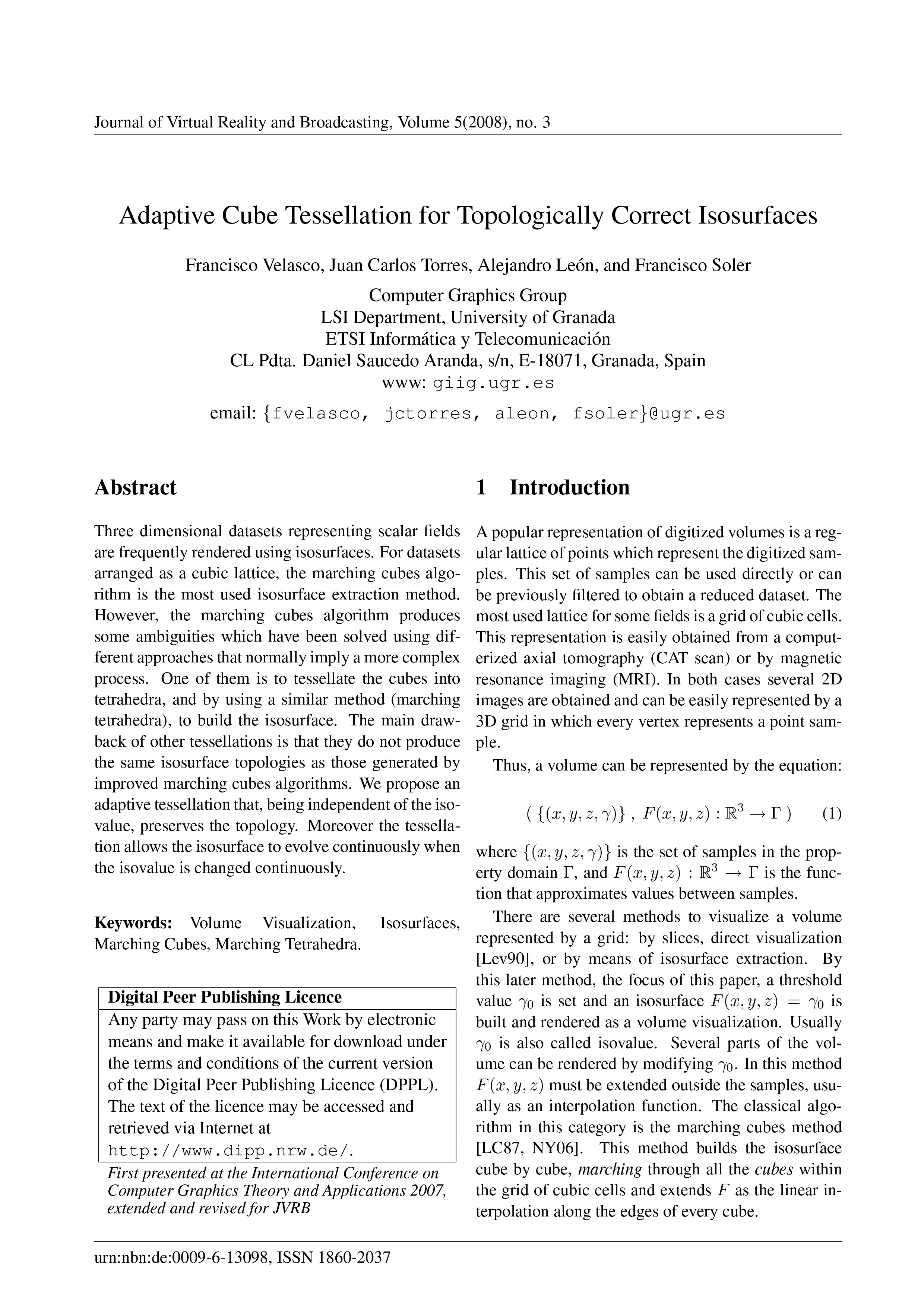Adaptive Cube Tessellation for Topologically Correct Isosurfaces
DOI:
https://doi.org/10.20385/1860-2037/5.2008.3Keywords:
Isosurfaces, Marching Cubes, Marching Tetrahedra, Volume VisualizationAbstract
Three dimensional datasets representing scalar fields are frequently rendered using isosurfaces. For datasets arranged as a cubic lattice, the marching cubes algorithm is the most used isosurface extraction method. However, the marching cubes algorithm produces some ambiguities which have been solved using different approaches that normally imply a more complex process. One of them is to tessellate the cubes into tetrahedra, and by using a similar method (marching tetrahedra), to build the isosurface. The main drawback of other tessellations is that they do not produce the same isosurface topologies as those generated by improved marching cubes algorithms. We propose an adaptive tessellation that, being independent of the isovalue, preserves the topology. Moreover the tessellationallows the isosurface to evolve continuously when the isovalue is changed continuously.
Published
2008-03-20
Issue
Section
GRAPP 2007





